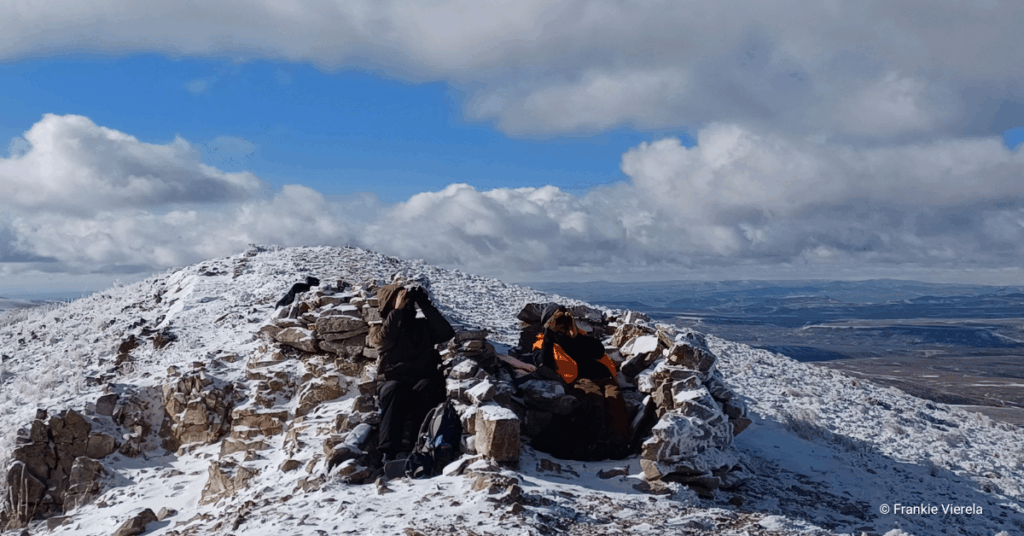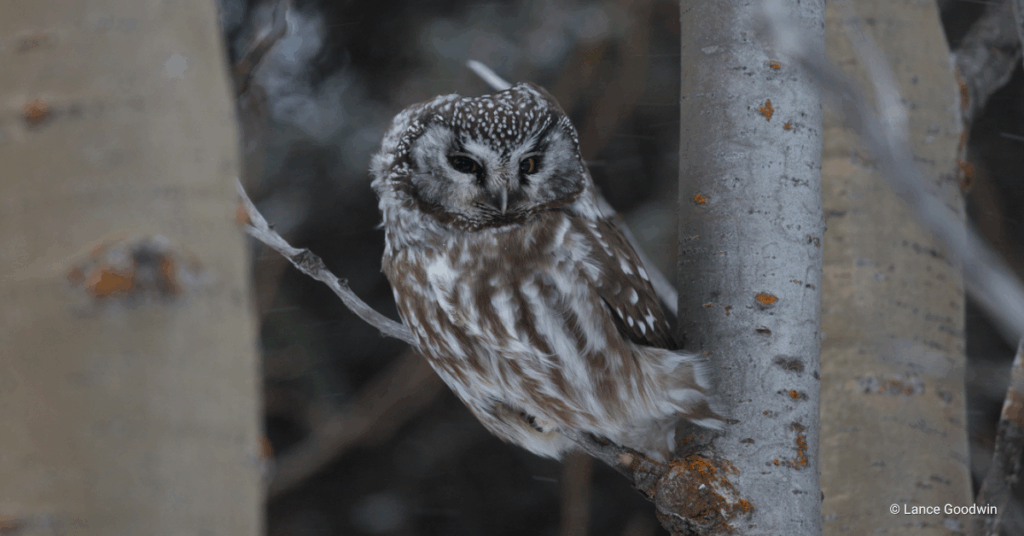Endings are hard. Our 2023 Global Raptor Grant awardees have wrapped up their projects and are ready to share with you all they have accomplished over the last year and a half. Thanks to support from Kaddas Enterprises, these awardees focused on studying and conserving some of the most at-risk raptor species around the world.
Brayan Gomez, Rufous-tailed Hawk, Chile
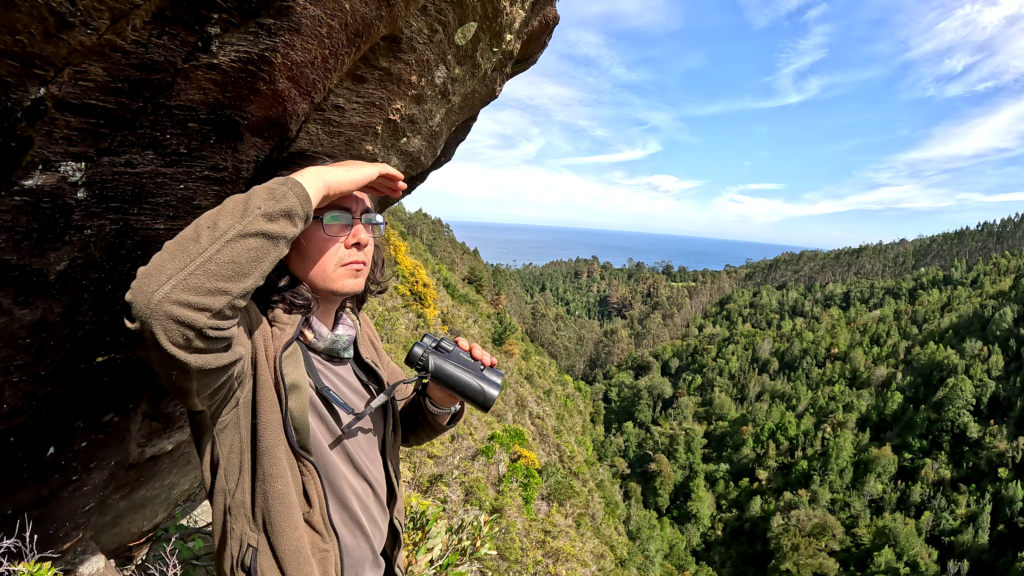
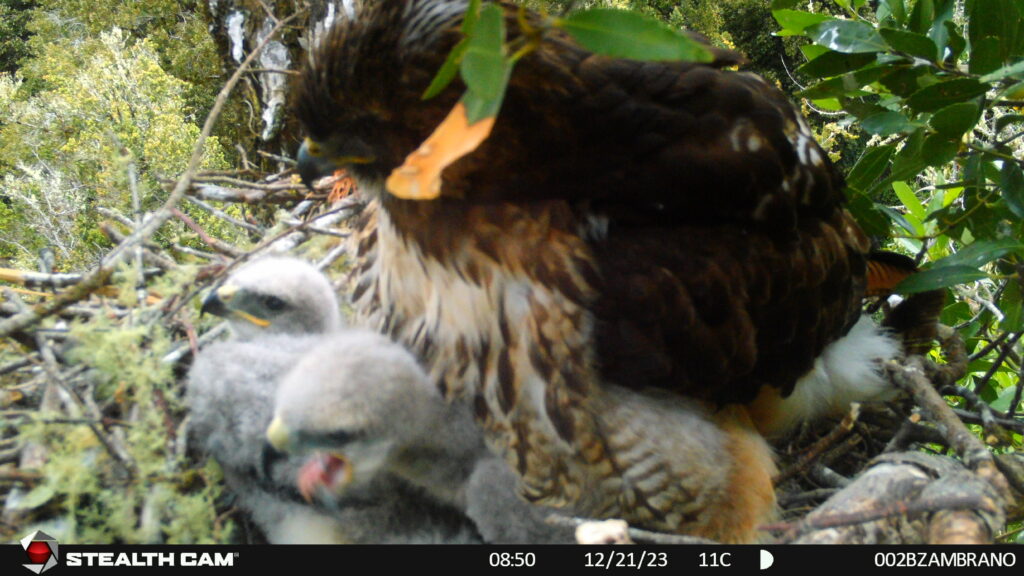
Brayan surveys for hawks (left); A Rufous-tailed Hawk appears on a nest camera alongside its chicks (right)
Brayan Gomez found just one Rufous-tailed Hawk nest during the course of his fieldwork, but what an important nest it was to find. The nest was in a temperate rainforest fragment within an exotic forest plantation, Brayan found the nest as the forest was being actively logged. After he informed the land managers, they agreed to stop logging until after the breeding season—benefiting the birds and Brayan’s research. Brayan banded the birds and took blood samples for DNA analysis, and also installed cameras near the nest. This allowed him to document the diet of the Rufous-tailed Hawk. He found that they ate mostly birds, including native, exotic, and occasionally domestic birds, as well as other birds of prey. Brayan believes this is part of the reason the species is viewed as such a “superpredator” and is threatened by persecution from humans; since they sometimes feed on domestic chickens.
Brayan found other Rufous-tailed Hawks at only 7 of the 65 sites his team surveyed during the project period. His results show that breeding Rufous-tailed Hawks are mainly found in temperate rainforest fragments in landscapes dominated by agricultural areas, followed by a landscape dominated by exotic forest plantations and in a continuous forest. A team of students, local families, forest managers, and people from the Mapuche community assisted with the work while learning more about the species, temperate rainforest ecology, and the ecosystem services of raptors. He also won an award for his talk this month on this research. Brayan plans to expand this research into new regions, continue building his breeding program, and educate the public on these birds.
Arjun P. Kannan, Pied Harrier, India
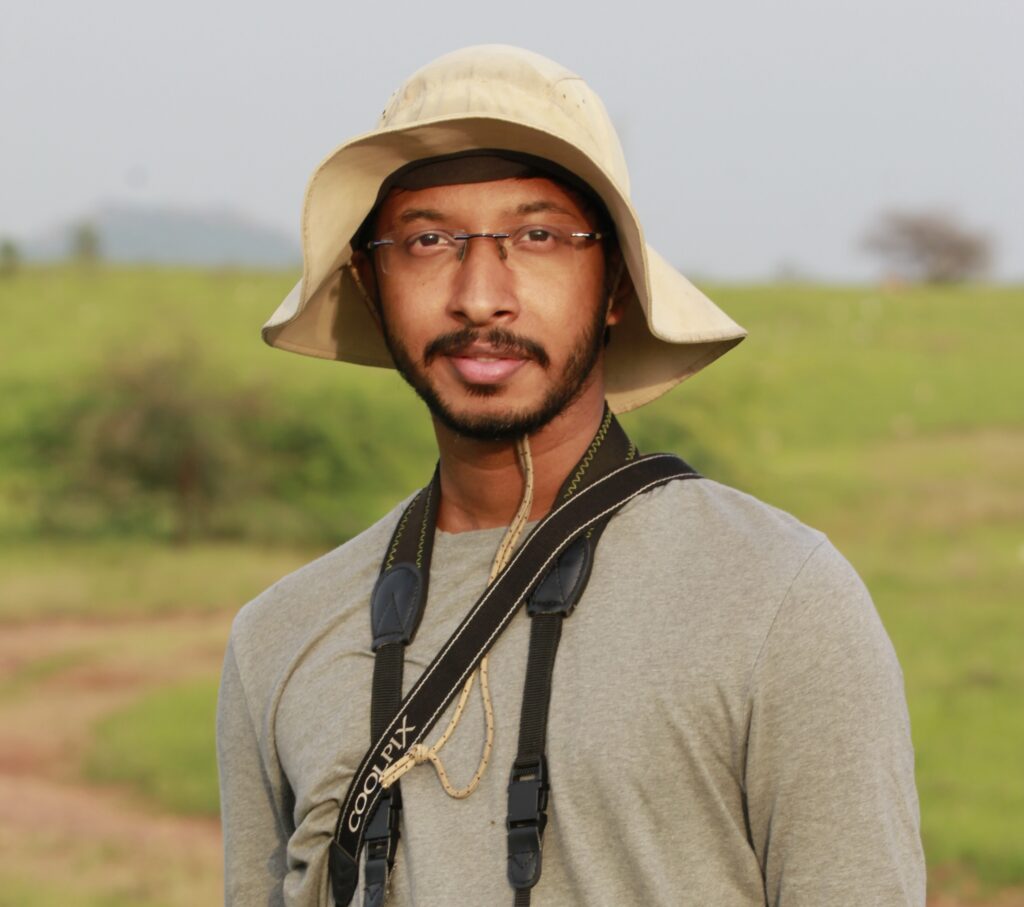

Arjun in the field (left); Pied Harrier in flight (right)
Arjun Kannan also hoped to document the breeding status of a severely understudied species: the Pied Harrier. With just one scientific publication at the time of his award, Arjun had high hopes to better understand this species by studying it within a previously known territory, Manas National Park (MNP) in India. However, the park’s land use has changed dramatically over the last 40 years, and he located no breeding pairs. He had better luck during his winter surveys, identifying one roost site within the park and another outside it. Arjun believes that changes to the park due to the political unrest of 1989-2003, a river’s changing course, and unscientific fire management have made the habitat less desirable for harriers.
Arjun also surveyed two other protected areas, Orang National Park and Pobitora Wildlife Sanctuary. He once again found Pied Harriers during the winter but none during the breeding season. He hopes to secure funding to conduct more extensive monitoring in the grasslands in eastern India and along the foothills of the Himalayas in central India to confirm whether the species still breeds in the area. He also hopes to recruit local community members to participate in a long-term monitoring program where they will help collect important data and learn more about the species and the critical habitats it occupies.
Lungten, Pallas’s Fish Eagle, Bhutan
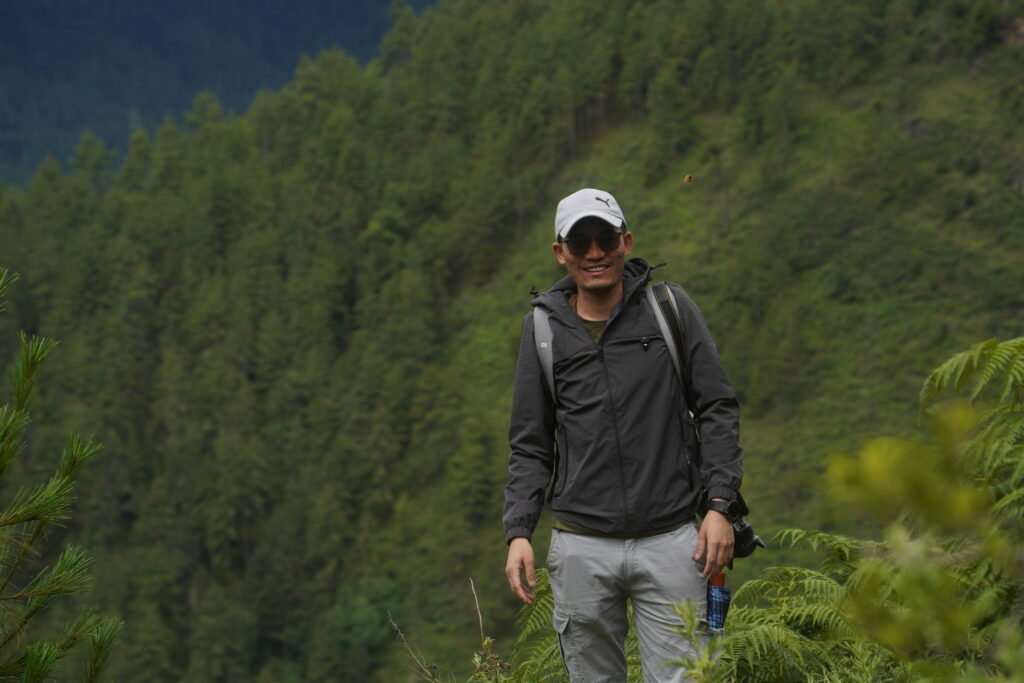
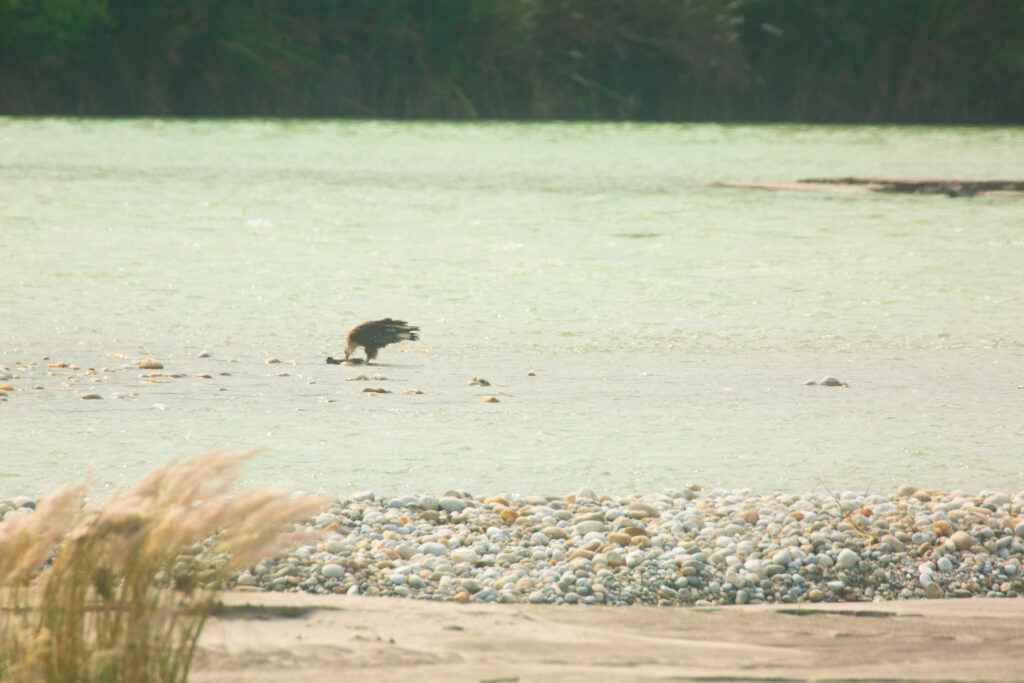
Lungten in the field (left); Pallas’s Fish Eagle feeding (right)
Similarly to the rest of the species studied, little is known about where Pallas’s Fish Eagles live, how many there are, and what threats they face. Lungten kept busy this field season studying all three. The maximum number of sightings in his study area in Bhutan came from the Upper Punatsangchhubasin, and the lowest was recorded in Deangmechhu. No sighting was recorded from the mid-Punatsangchhu basin. Lungten found that most birds were spotted in open valleys with slow-moving rivers, allowing the eagles good visibility of fish for easy hunting.
From there, he started looking into what harms these birds. Perhaps unsurprisingly, the most common threat was disturbance by humans, followed by fishing and pollution. Although it was not the most common, Lungten found that hydropower development and sand and stone mining had the most severe impact as they change the entire river ecosystem.
Based on what Lungten has learned, he plans to explore new areas to survey eagles. Locals Lungten met while surveying also shared that they have seen Pallas’s Fish Eagles nesting in a particular region, which he hopes to visit and confirm nesting attempts. Keep an eye out for a paper on this research, too!
Abiola Chaffra, Hooded Vulture, Benin
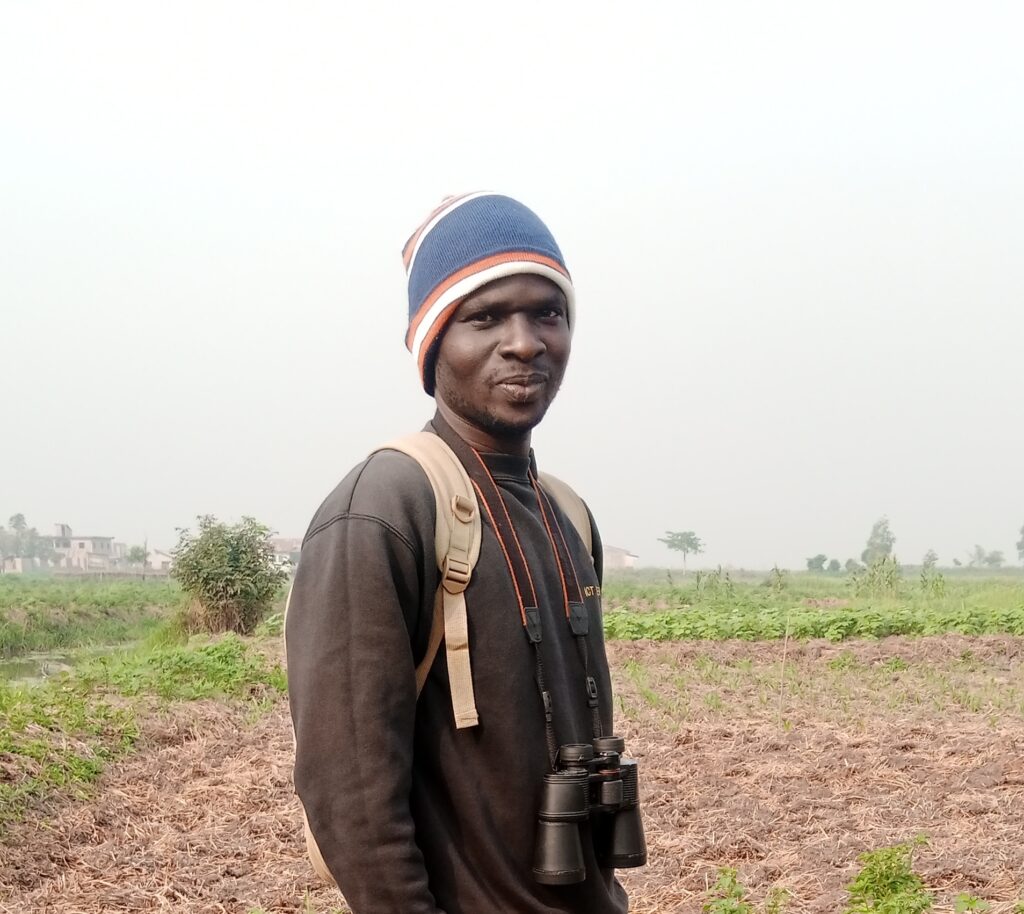
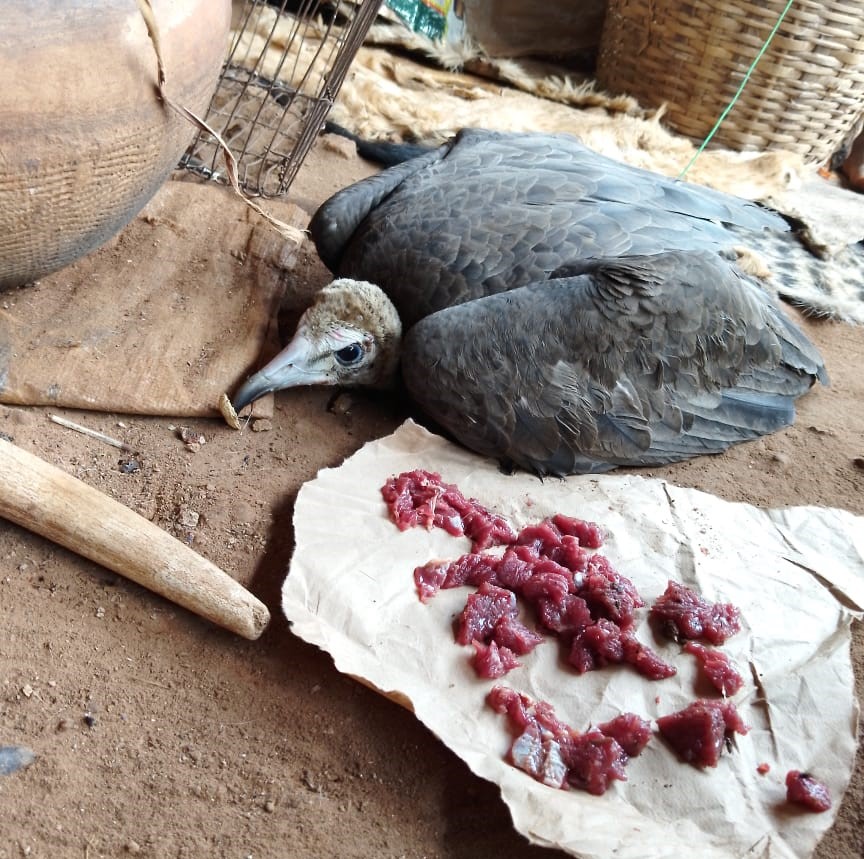
Abiola in the field (left); a Hooded Vulture being sold in one of the markets (right)
Abiola Chaffra didn’t have as much trouble locating his focal species, the Hooded Vulture, but he still had his work cut out for him. This Critically Endangered raptor’s population has declined by an estimated 62% globally over the last half-century. Visiting fetish markets in West Africa, you start to see why. Abiola set out to survey these markets for vendors selling dead and living Hooded Vultures and educate them on the laws surrounding the protection of these species. His team found 522 individual vultures, dead or alive, in markets coming from a range of countries, including Niger, Nigeria, Burkina-Faso, Ghana, Mali, Côte d’Ivoire, northern Togo, and central and northern Benin.
Of the 185 sellers Abiola found selling dead animals, he surveyed 115 to understand their perspective and evaluate their conservation knowledge. From his surveys, Abiola found that all sellers came from the Fon cultural area, and 92% of those surveyed knew the laws protecting these birds. They shared that those hunting/trapping the birds should be held accountable, not the sellers.
You can expect to hear more about this research Abiola is writing in collaboration with HWI’s Dr. Meg Murgatroyd. Abiola also has plans to present this research in 2025, maybe even stateside next year!
Looking for funding for your research? Our 2025 cycle is open for applications through January 15th for projects researching high-priority species. Click here to learn more and apply: https://hawkwatch.org/investing-in-others/grrcg/
This blog was written by Kirsten Elliott and Sammy Riccio, HWI’s Development & Communications team after synthesizing the reports provided by our grantees. You can learn more about our 2023 grantees here.


